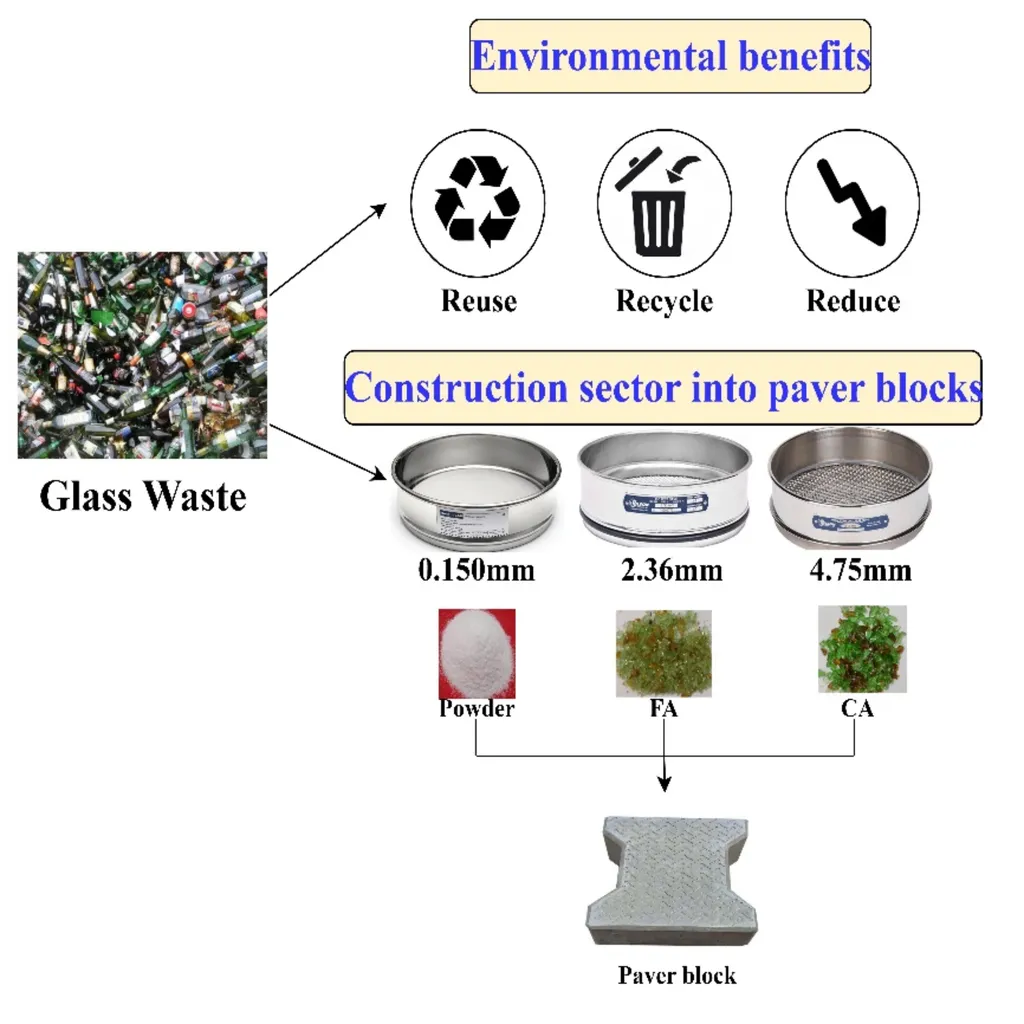In the quest to reduce the construction industry’s carbon footprint, researchers are increasingly turning to waste materials as viable alternatives to traditional concrete components. A recent study led by Zobaer Saleheen from the Sustainable Engineered Construction Materials (SECM) Research Group at Queensland University of Technology (QUT) in Brisbane, Australia, explores the potential of waste glass powder (GP) and nitrile rubber (NR) fibres in concrete-filled steel tube (CFST) columns. The findings, published in the journal ‘Buildings’ (which translates to ‘Zdania’ in English), offer promising insights into the future of sustainable construction.
The study focuses on the compressive behaviour of CFST stub columns incorporating GP and NR fibres. With the concrete industry under scrutiny for its significant carbon emissions, the need for sustainable alternatives has never been more pressing. “The inclusion of waste materials like glass powder and rubber fibres in concrete is a step towards a circular economy,” explains Saleheen. “However, the challenge lies in maintaining the structural integrity and performance of the concrete when these materials are introduced.”
The research team developed twelve concrete mix variations, with and without steel tube confinement. GP was used to replace cement at levels ranging from 10% to 30% by weight, while NR fibres were added at 0.5% and 1% by volume of concrete. The results showed that incorporating GP and NR fibres led to a reduction in compressive strength, with the effect compounded when both materials were combined. However, the steel confinement within CFST columns effectively mitigated these strength reductions, restoring up to 17% of the lost capacity. Moreover, the confinement significantly improved the ductility and energy absorption capacity of the columns.
One of the most notable findings was the consistent local outward buckling failure mode observed in all CFST columns, regardless of the concrete mix variations. This consistency suggests that CFST technology could provide a reliable and predictable means of incorporating waste materials into structural elements. “The potential of CFST columns to enhance the performance of sustainable concrete is immense,” says Saleheen. “This technology could pave the way for the wider adoption of waste materials in the construction sector, contributing to a more sustainable and circular economy.”
The study also highlighted discrepancies between the experimental results and predictions from existing design codes and empirical models. These findings underscore the need for refined design approaches tailored to CFST columns with sustainable concrete infill. As the construction industry continues to grapple with the challenges of sustainability, research like this offers valuable insights into the development of eco-friendly, high-performance structural systems.
The implications of this research extend beyond the construction sector, with significant commercial impacts for the energy sector. As the demand for sustainable and energy-efficient buildings grows, the adoption of innovative materials and technologies like CFST columns could play a crucial role in meeting these demands. By reducing the carbon footprint of construction materials, the energy sector can contribute to the global effort to combat climate change and promote sustainable development.
In conclusion, the study led by Saleheen and his team at QUT sheds light on the potential of waste materials in the construction industry. The findings not only highlight the benefits of CFST technology but also underscore the need for further research and development in this area. As the world continues to seek sustainable solutions, the insights gained from this study could shape the future of construction and contribute to a more sustainable and circular economy.

